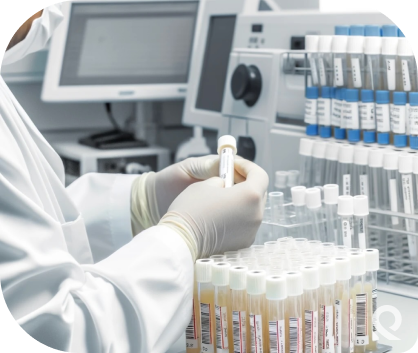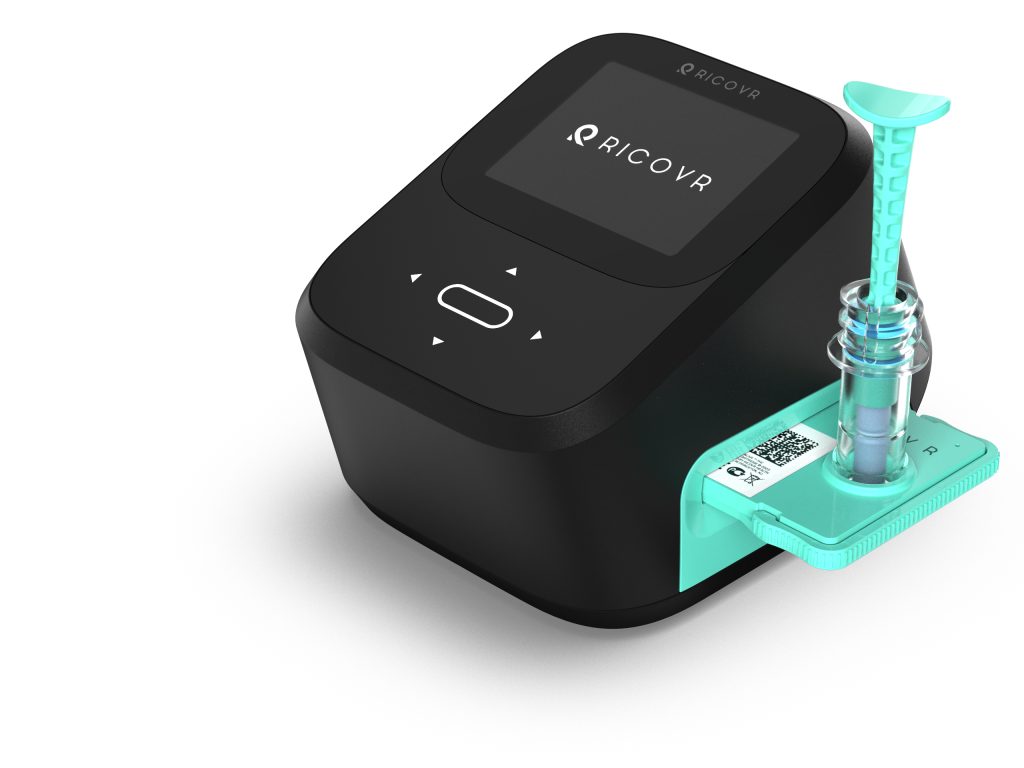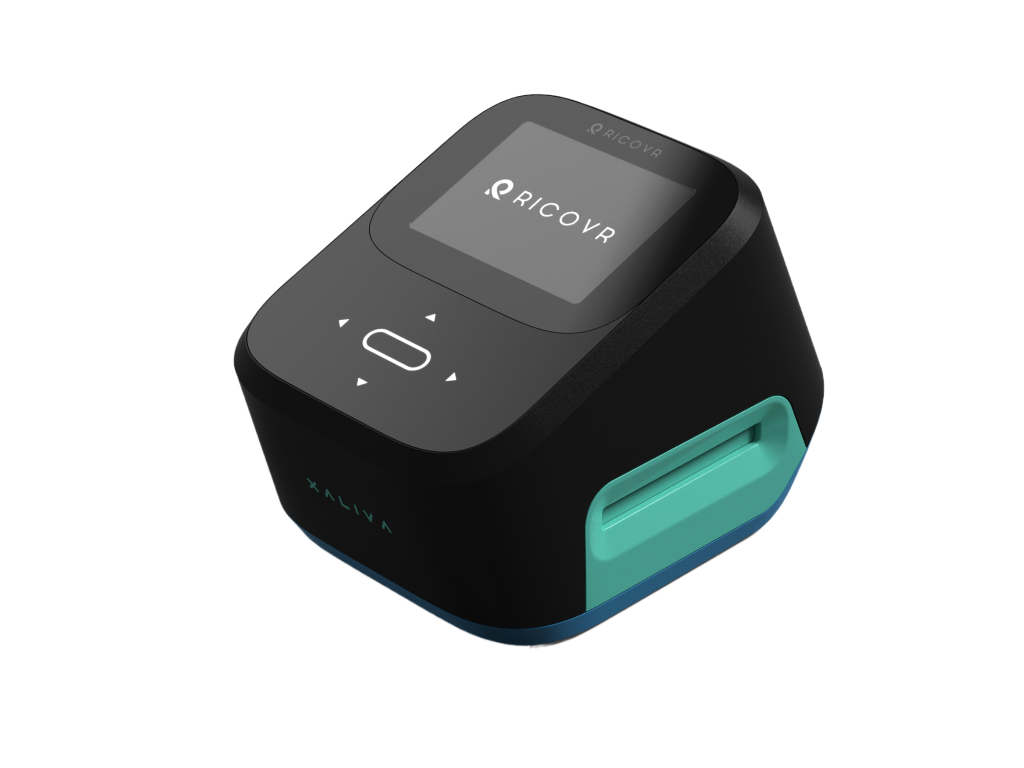A Hybrid Approach for Employer Drug Testing to Elevate Safety & Retain Employees
Employers currently have two choices regarding workplace drug testing: laboratory-based or on-site, rapid-based testing. We will discuss each approach’s advantages and disadvantages, influenced by accuracy, time, cost, and other factors. While this article explores the pros and cons of lab-based versus on-site rapid testing, our review suggests that employers should consider using a hybrid approach, leveraging the key advantages of both methods. If you are new to drug testing, starting with this overview for employers, Understanding Employer Drug Screening: A Positive Step Towards a Safer Workplace, may be helpful reading first.
Lab-Based Testing Overview
Typically, there are two main ways for employers to implement lab-based drug testing programs:
1
A specimen collector or a Third-Party Administrator (TPA) comes to your work facility and collects the samples. These experts typically have taken coursework and are certified to collect and handle specimens (e.g., usually urine or saliva, less often hair and blood) from each employee using specific protocols. After collecting the samples, the specimen collector labels them and sends them (by priority mail or courier service) to a local laboratory for testing analysis.
2
HR or the employer’s supervisor tells the employee to get tested at a local lab, such as Quest or LabCorp. Therefore, the employee must make an appointment, leave work, and physically attend this testing facility. Some employers have contracts with local urgent care facilities that have the staff to collect the samples, and these facilities provide the samples to a local lab.
The process is relatively straightforward, but these labs are busy, and it can take time to schedule an appointment and 2-5 days to complete the entire process. On the day of the appointment, the employee travels to the lab facility, checks in, waits in the lobby, and then provides a urine or saliva sample for the lab. The lab technician collects the sample, labels it, and usually the results online on a secure website portal in 2-3 days.
After collection, these labs can often perform two types of tests:
- Labs will typically first perform an immunoassay, such as another type of enzyme-linked assay, as a screening test. It usually takes 2-5 days to complete because of required sample preparation, test backlog, and batch processing.
- In the case of a positive or non-negative result, labs will perform a second confirmatory test using another method, such as mass spectrometry (MS), a more sensitive and time-consuming test.
After collection, the samples are physically mailed or couriered to a local lab. Testing samples are batched and processed in lots and results typically take 2-5 days.

Pros
- Accuracy and Reliability: These local laboratories perform screening tests using immunoassays and confirmatory tests that often use liquid or gas chromatography-mass spectroscopy (LC-MS or GC-MS). The lab test uses large, special lab-grade equipment with trained technicians to run the tests. Therefore, these lab facilities can run various tests that detect a wide range of substances, but the drawback is that it takes more time, often 2-3 days or longer, to get the results. The Substance Abuse and Mental Health Services Administration (SAMHSA) guidelines for lab testing ensure stringent procedures for specimen handling, analysis, and result reporting, minimizing the chances of false positives or negatives.
- Legal Defensibility: Results from a SAMHSA-certified lab are generally more defensible in court. These tests are important for decisions such as termination of employment, which can be legally challenged. Laboratory tests can include both initial screens and confirmatory tests.
- Comprehensive Drug Panels: Laboratories can test for a broader array of substances, including newer drugs of abuse and prescription medications, providing a comprehensive overview of an individual’s use.
Cons
- Accurate Detection: Specifically for cannabis, there are challenges in the detection of recent cannabis use during the impairment window of the parent drug Delta-9 Tetrahydrocannabinol (THC). (8-10) The impairment window ranges from within minutes to 10 hours after smoking or vaping and longer for edibles up to 10 hours. These challenges spur more research and development for better drug testing methods. (5,11,13)
- Privacy: Traditional lab drug screening testing uses invasive methods, such as taking urine and sometimes a blood sample. For example, a Urine test requires going to a bathroom and adequately handling the specimen. Meanwhile, blood draws require a phlebotomist and pose challenges to administering these blood tests onsite. Unlike saliva, taking these samples can take extra time and often requires more steps but can open up privacy concerns regarding confidentiality and health information.
- Turnaround Time: Lab tests require specimen collection, shipment to the lab, analysis, and reporting of results, which can take several days to a week or more. This delay can be a significant drawback for employers needing immediate results.
- Collection Personelle Specimen: Collecting specimens and sending them to a lab often requires partnering or contracting with a third-party administrator (TPA) and scheduling time with their personnel on when they are available to collect the specimens on-site. After collection, the samples must be appropriately labeled and safely transported to the lab for analysis, which results in more costs passed to the employer.
- Cost: The fixed and variable labor costs below add up quickly, making lab-based testing more expensive than a rapid test.
- These labs use large medical-grade testing equipment that often requires an expensive upfront capital purchase and ongoing maintenance with expensive reagents and disposables.
- Extra packaging to collect and send the samples.
- Additional time to deliver the samples by mail or courier service from the collection site to the actual lab,
- Employ a specially trained specimen handler or third-party administrators who must come on-site to collect and send the sample.
- A variable opportunity cost, which is often hard to quantify, results in a high cost of waiting 2-5 days for the lab, resulting in lost time for both the employee and employer.
On-Site Rapid Testing Overview

Employer performing an onsite test in an office setting. The process includes the collection, analysis, and results, can take 10 to 20 minutes, and equips the employer with actionable information to ensure workplace safety. There are two types of rapid tests: One that uses Urine and one that uses Saliva. This article will focus on the Saliva-Based method please read the article, Compare Drug Testing Methods to contrast saliva-based from urine-based drug testing.
Over the last ten years, new portable technology has allowed employers to conduct onsite testing or an immunoassay that takes a saliva sample and detects the parent drug Delta-9 THC. The devices range from the size of a suitcase to handheld devices that are not much bigger than your smartphone. The onsite drug test includes all three components below and all the reagents and supplies to conduct drug testing at the point of care (POC) or onsite.

Device Reader
A reusable reader scans and analyzes the metabolites in the sample.

Cartridge
Some manufacturers have developed a disposable cartridge that attaches to the collection tube and slides into the Device Reader. This elegant process ensures the sample is processed correctly and reproducibly for accurate results.

Collection Specimen Kit
This kit has all the disposable, one-time-use plastic components to take the saliva sample. This kit includes the oral swap and collection tube to ensure the sample does not leak or get contaminated.
Accurate Detection of Recent Cannabis Use: A Saliva test detects the parent drug Delta-9 THC, and this metabolite is only present in saliva within the detection window of 30 minutes to up to 10 hours. This detection window overlaps best with cannabis impairment, and experts designate this as recent-use testing.
Speed of Results: Rapid tests provide results within 10-20 minutes, allowing employers to make actionable decisions, especially in critical safety-sensitive environments. This swift turnaround is advantageous for various industries and testing scenarios, providing a clear next step.
Pros
- If Negative: Employees can return to work without delay if the supervisors or HR do not have any concerns.
- If Positive: The employee should be considered a potential safety risk, and a 2nd second confirmatory lab test should be administered. This lab test will confirm the employee tests positive for recent cannabis use and violates the company’s workplace policy. Human resources and the DRE specialist should follow a consistent protocol outlined in the HR policy and employee handbook.
Convenience and Ease of Use: On-site tests are designed for simplicity, where HR or supervisors can efficiently conduct a test using the portable device and kit.
Cost-Effectiveness: The cost of rapid testing is often more cost-effective than lab-based testing, and I have outlined some of the more common reasons below.
- Rapid tests typically employ smaller, portable device components with fewer parts and fewer reagents, making them less expensive to produce.
- Since rapid tests provide results within 10-20 minutes, there is very little time to wait, thereby reducing unproductive time for both the employee and employer, saving costs for the employer.
- Rapid tests do not require specially trained personnel to come on-site or make employees go off-site to get tested, saving time and costs. Some employers would rather have TPA run rapid tests on-site, but many of these are becoming so easy to administer that most people can easily read and follow the instructions.
Cons
Qualitative Measurement: On-site rapid tests are often preliminary drug screening tests. These portable devices provide a binary Yes or No result on drug detection and usually do not provide a quantitative measurement. The employer should check the manufacturer’s instructions and validation data to determine the best implementation for the company.
Limited Drug Panel: Rapid tests typically screen for a narrower range of drugs than lab tests. This limitation can result in omitting newer synthetic drugs or specific prescription medications. According to the Quest Diagnostics report, marijuana drug tests are the most prevalent and have the highest positivity rates. (2)
Legal and Compliance Risks: The cannabis landscape is evolving rapidly with new federal and state cases. It is prudent for employers to consult their legal team and outside counsel to comply with state and federal statutes and update their HR and corporate policies to mitigate risk and ensure safety. For additional information on best practices, please click the link to read the article on Employer Drug Testing – Policies and Procedures.
Additional Guidance and Best Practices
Employers are encouraged to refer to resources from the Substance Abuse and Mental Health Services Administration (SAMHSA), the Department of Transportation (DOT), and other relevant regulatory bodies.
1. Substance Abuse and Mental Health Services Administration (SAMHSA): Guidelines for Workplace Drug Testing
2. Department of Transportation (DOT): DOT Drug Testing: Part 40 – Employee Testing
Consulting with legal counsel can also ensure that drug testing policies comply with applicable laws and regulations, mitigating risks and safeguarding workplace safety and productivity. Employers should always stay informed of the latest regulations and technologies in drug testing to make informed decisions that align with their organizational policies and legal obligations.
Summarizing Lab Based Testing to Onsite Rapid Testing: The Need for Middle Ground and Hybrid Approach
Many recent published reports by the scientific community show that saliva has emerged as the best method for assessing recent cannabis use compared to blood or urine. (6-9) Saliva directly tests for the active delta-9 THC compound with a less variable time window of detection from within 30 minutes (smoked and longer for edibles) to 12 hours, better aligning with impairment. In contrast, urine tests detect inactive THC metabolites such as THC-COOH, which can not distinguish past use from recent use. (10,11) For more details on technical differences between oral fluid or saliva tests and urine or blood tests, please read Comparing Drug Testing Methods – Pros and Cons for Each Drug Test.
The choice between lab-based and on-site rapid testing depends on the employer’s requirements and circumstances. In our current cannabis climate, employers are more concerned about whether or not employees are fit to work during working hours and less worried about off-hour drug use. This makes urine testing inadequate and often unfair because it confirms the past use of cannabis consumption over the last 30 days.
As employers weigh the pros and cons of each method, many companies are navigating towards a hybrid approach. The hybrid approach utilizes the critical benefits of an on-site rapid test for the initial drug screen detecting recent cannabis use, and the results of this test guide whether or not to perform and incur the additional costs of lab testing. This quick, practical, and objective approach assesses whether employees can safely execute and complete their tasks. Distinguishing between recent use versus past use can help employers retain productive employees who casually consume cannabis during off hours or on their own free time from employees who consume cannabis shortly before or during work hours.

The hybrid drug testing approach uses the combination of an initial screening test and a confirmation lab test. The initial screen uses the portable device, a collection tube with a swab that fits into a disposable cartridge that slides into the device. In 15 minutes, the Xaliva THC device provides a negative or non-negative result. If the result is non-negative then a confirmation lab test is recommended. At Ricovr Healthcare, the Xaliva THC solution (e.g., Xaliva THC device reader, disposable cartridge, and collections kits) can differentiate recent use from past use with onsite cannabis testing. Onsite testing equips the company with a new tool to ensure safety. The technology can be leveraged company-wide as a deterrent that consuming before and during work is not tolerated since the Xaliva THC solution will detect Delta-9 THC in their employees’ body-altering their behavior at work and causing a safety risk to themselves or their peers.
The Xaliva THC solution enables employers to perform onsite drug testing in about 15 minutes. The Xaliva THC device reader runs an immunoassay, directly detecting the Delta-9 THC metabolite with its proprietary scanning technology showing a positive or negative result on the display screen, objectively determining if the employee has recently consumed cannabis in the last 10 hours. The carefully designed Xaliva THC solution provides an easy method for anyone to collect a saliva sample directly from the employee’s mouth by attaching the enclosed tube to the cartridge and running the test. The process and enclosed disposable products keep the saliva contained in the collection tube and cartridge so there is no mess, spills, or risk of contamination, resulting in a consistently reproducible test that the employer and employee can directly observe at all times.
Executing this process consistently requires clear policy and communication to implement it well. Overall, this hybrid testing approach better balances fairness with safety & risk. To further evaluate your choices, please click the link and read the article Employers are Using Recent Use Cannabis Testing: Balancing a Safe & Fair Workplace.
Sources
- Connor, J. P. et al. Cannabis use and cannabis use disorder. Nat. Rev. Dis. Prim. 7, 16 (2021).
- Quest Diagnostics. 2023 Drug Testing Index and Industry Insights. https://www.questdiagnostics.com/business-solutions/employers/drug-screening/knowledge-center/drug-testing-index.
- Reid, M. A qualitative review of cannabis stigmas at the twilight of prohibition. J. Cannabis Res. 2, 46 (2020).
- Musshoff, F. & Madea, B. Review of Biologic Matrices (Urine, Blood, Hair) as Indicators of Recent or Ongoing Cannabis Use. Ther. Drug Monit. 28, 155–163 (2006).
- Vandrey, R. et al. Pharmacokinetic Profile of Oral Cannabis in Humans: Blood and Oral Fluid Disposition and Relation to Pharmacodynamic Outcomes. J. Anal. Toxicol. 41, 83–99 (2017).
- Hoffman, M. A. et al. Blood and Oral Fluid Cannabinoid Profiles of Frequent and Occasional Cannabis Smokers. J. Anal. Toxicol. 45, 851–862 (2021).
- Hubbard, J. A. et al. Biomarkers of Recent Cannabis Use in Blood, Oral Fluid and Breath. J. Anal. Toxicol. 45, 820–828 (2021).
- Fitzgerald, R. L. et al. Driving Under the Influence of Cannabis: Impact of Combining Toxicology Testing with Field Sobriety Tests. Clin. Chem. 69, 724–733 (2023).
- J A Hubbard, M A Hoffman, S E Ellis, P M Sobolesky, B E Smith, R T Suhandynata, E G Sones, S K Sanford, A Umlauf, M A Huestis, D J Grelotti, I Grant, T D Marcotte, R L Fitzgerald, Biomarkers of Recent Cannabis Use in Blood, Oral Fluid and Breath, Journal of Analytical
Toxicology, Volume 45, Issue 8, October 2021, Pages 820–828, https://doi.org/10.1093/jat/bkab080 - Robert L Fitzgerald, Anya Umlauf, Jacqueline A Hubbard, Melissa A Hoffman, Philip M Sobolesky, Shannon E Ellis, David J Grelotti, Raymond T Suhandynata, Marilyn A Huestis, Igor Grant, Thomas D Marcotte, Driving Under the Influence of Cannabis: Impact of Combining Toxicology Testing with Field Sobriety Tests, Clinical Chemistry, Volume 69, Issue 7, July 2023, Pages 724–733, https://doi.org/10.1093/clinchem/hvad054
- Melissa A Hoffman, Jacqueline A Hubbard, Philip M Sobolesky, Breland E Smith, Raymond T Suhandynata, Sandra Sanford, Emily G Sones, Shannon Ellis, Anya Umlauf, Marilyn A Huestis, David J Grelotti, Igor Grant, Thomas D Marcotte, Robert L Fitzgerald, Blood and Oral Fluid Cannabinoid Profiles of Frequent and Occasional Cannabis Smokers, Journal of Analytical Toxicology, Volume 45, Issue 8, October 2021, Pages 851–862, https://doi.org/10.1093/jat/bkab078
- Lee, D. & Huestis, M. A. Current knowledge on cannabinoids in oral fluid: Current knowledge on cannabinoids in oral fluid. Drug Test. Anal. 6, 88–111 (2013)

